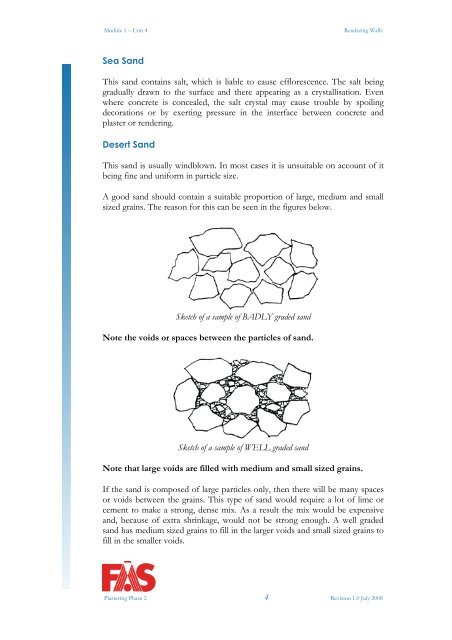TRADE OF PLASTERING - eCollege
TRADE OF PLASTERING - eCollege
TRADE OF PLASTERING - eCollege
Create successful ePaper yourself
Turn your PDF publications into a flip-book with our unique Google optimized e-Paper software.
Module 1 – Unit 4 Rendering Walls<br />
Sea Sand<br />
This sand contains salt, which is liable to cause efflorescence. The salt being<br />
gradually drawn to the surface and there appearing as a crystallisation. Even<br />
where concrete is concealed, the salt crystal may cause trouble by spoiling<br />
decorations or by exerting pressure in the interface between concrete and<br />
plaster or rendering.<br />
Desert Sand<br />
This sand is usually windblown. In most cases it is unsuitable on account of it<br />
being fine and uniform in particle size.<br />
A good sand should contain a suitable proportion of large, medium and small<br />
sized grains. The reason for this can be seen in the figures below.<br />
Sketch of a sample of BADLY graded sand<br />
Note the voids or spaces between the particles of sand.<br />
Sketch of a sample of WELL graded sand<br />
Note that large voids are filled with medium and small sized grains.<br />
If the sand is composed of large particles only, then there will be many spaces<br />
or voids between the grains. This type of sand would require a lot of lime or<br />
cement to make a strong, dense mix. As a result the mix would be expensive<br />
and, because of extra shrinkage, would not be strong enough. A well graded<br />
sand has medium sized grains to fill in the larger voids and small sized grains to<br />
fill in the smaller voids.<br />
Plastering Phase 2 4 Revision 1.0 July 2008

















